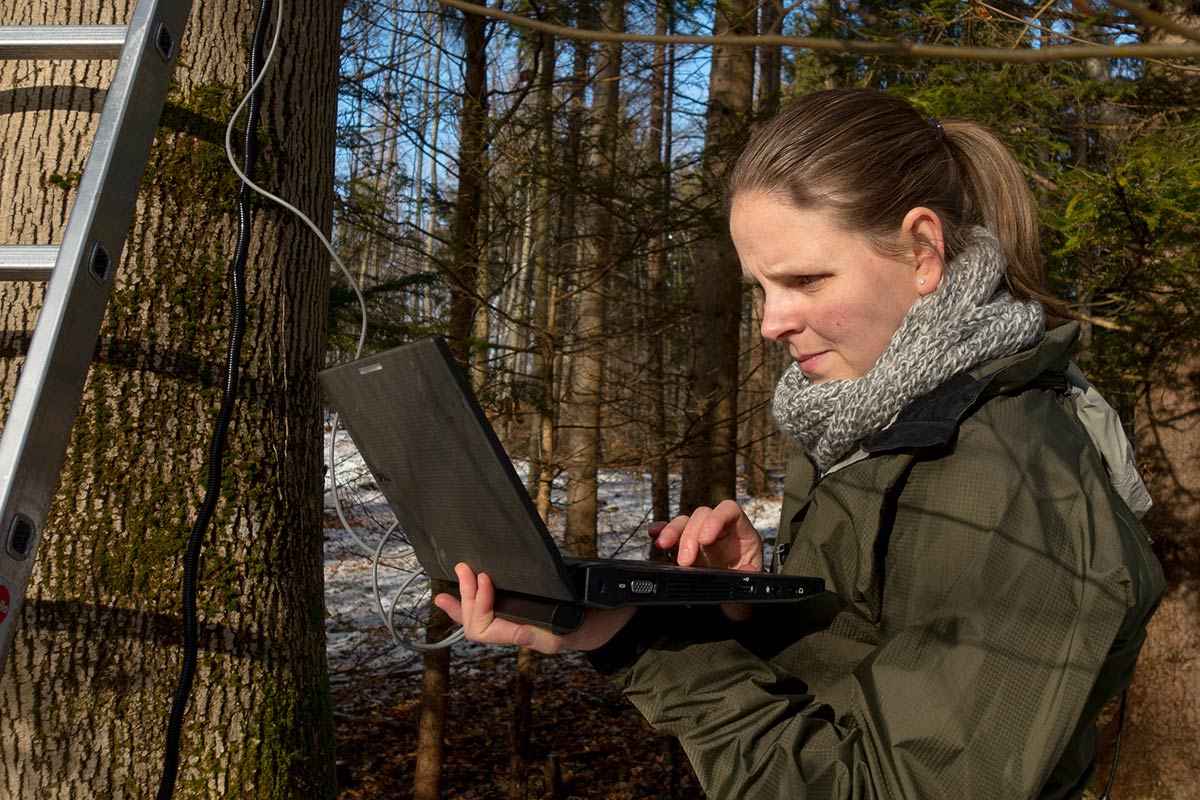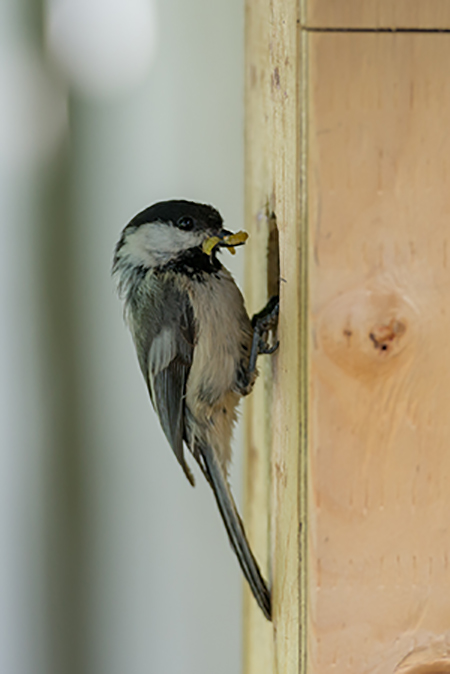
Kim Mathot, assistant professor in the Department of Biological Sciences, is pictured in the field, studying chickadees in their natural habitat.
For more than a decade, Kim Mathot, new assistant professor in the Department of Biological Sciences, has studied birds of many different feathers. But if you had asked her during her undergraduate degree where she'd be now, even she wouldn't have guessed where she would end up.
During her bachelor of science at the Simon Fraser University, Mathot was pre-med. In fact, she had already written the MCAT and begun writing applications before she took her first behavioural ecology course and was introduced to the world of academic research.
"I started studying birds by accident," Mathot explains. "My first job was doing research with birds during my undergraduate degree. I knew nothing about birds-or research for that matter. It really opened my eyes."
In flight around the world
So, Mathot took a seemingly drastic change of course to pursue her master's and eventually a PhD in behavioural ecology, studying birds. This took her from Canada to Germany, studying great tits (a songbird) at the Max Planck Institute for Ornithology and then to the Netherlands, where she studied red knots (a shorebird) . And then, in January 2017, she returned to Canada to take her new post as assistant professor in the Department of Biological Sciences at the University of Alberta's Faculty of Science.
"The Faculty of Science is big and very interdisciplinary. There are so many opportunities to collaborate," says Mathot. "I also love the winter, so I'm very excited about having proper winter here."
Here in Alberta, Mathot will study black-capped chickadees in two keys areas: Ministik, in Beaver County, as well as the University of Alberta's Botanic Gardens. Abundant in Alberta, chickadees flourish year-round, despite the ecologically challenging conditions for birds of their size.
Big inspiration in small packages
"My research program will seek to learn how chickadees understand the distribution of resources in their environment in order to survive the winters, how they exchange information, and how they choose to store food and energy," explains Mathot. "It is quite a feat for chickadees to survive the very cold winter weather we have here."
Currently, Mathot is marking populations of the birds so they can be monitored in future research. She hopes to build a research program that incorporates both graduate and undergraduate students.
"For me, and I think for many, exposure to academic research during my undergraduate degree changed my life. I want to give my students the opportunity to experience research, to ask questions and then go out to try to answer them," she says.
In September, Mathot will be teaching ZOO 371, a behavioural ecology course for undergraduate students, the very same course that inspired her to pursue research in the first place.